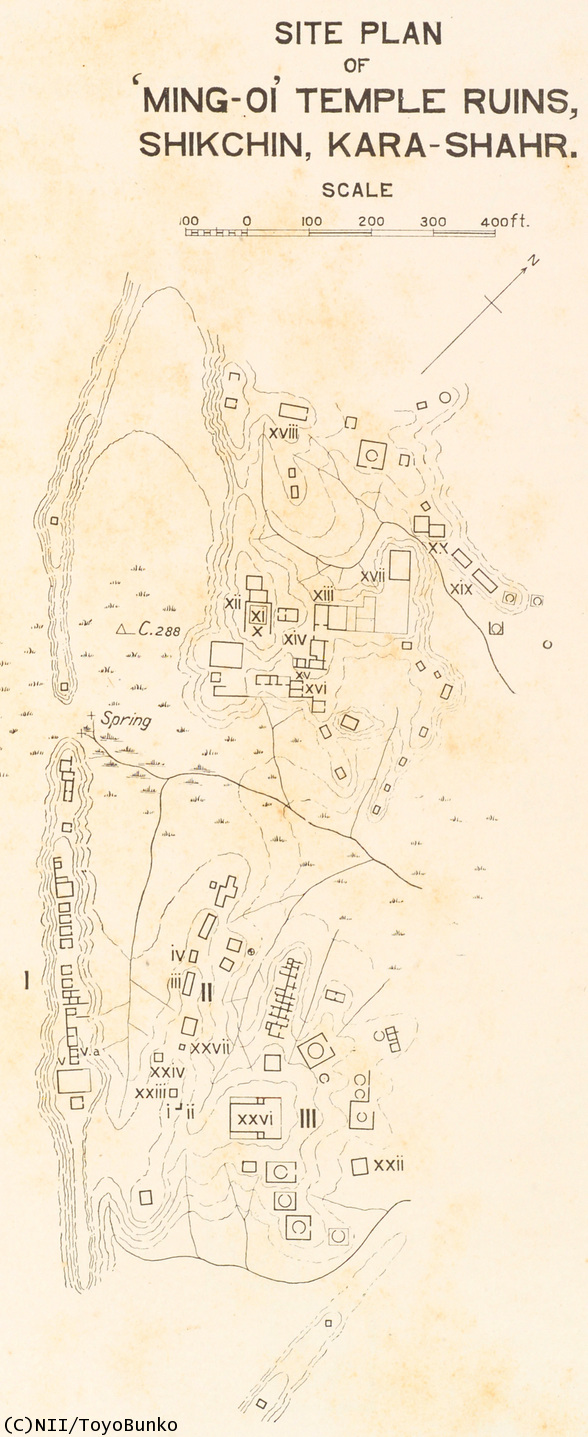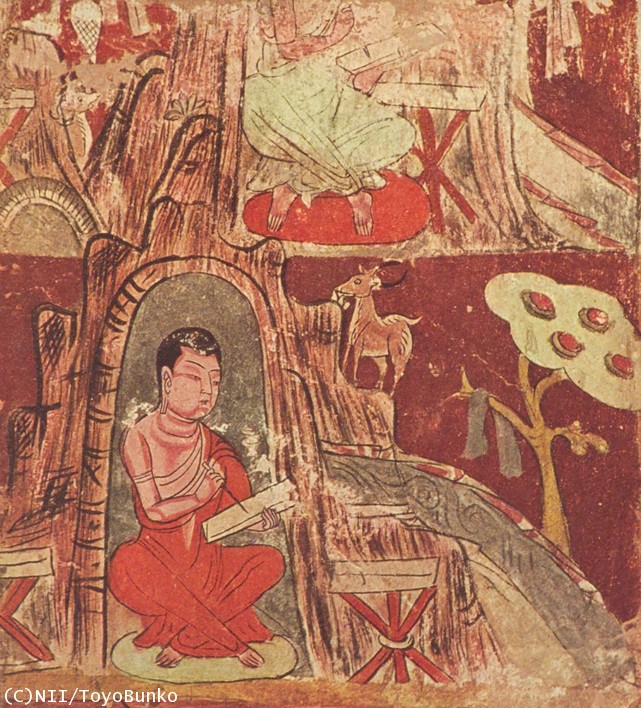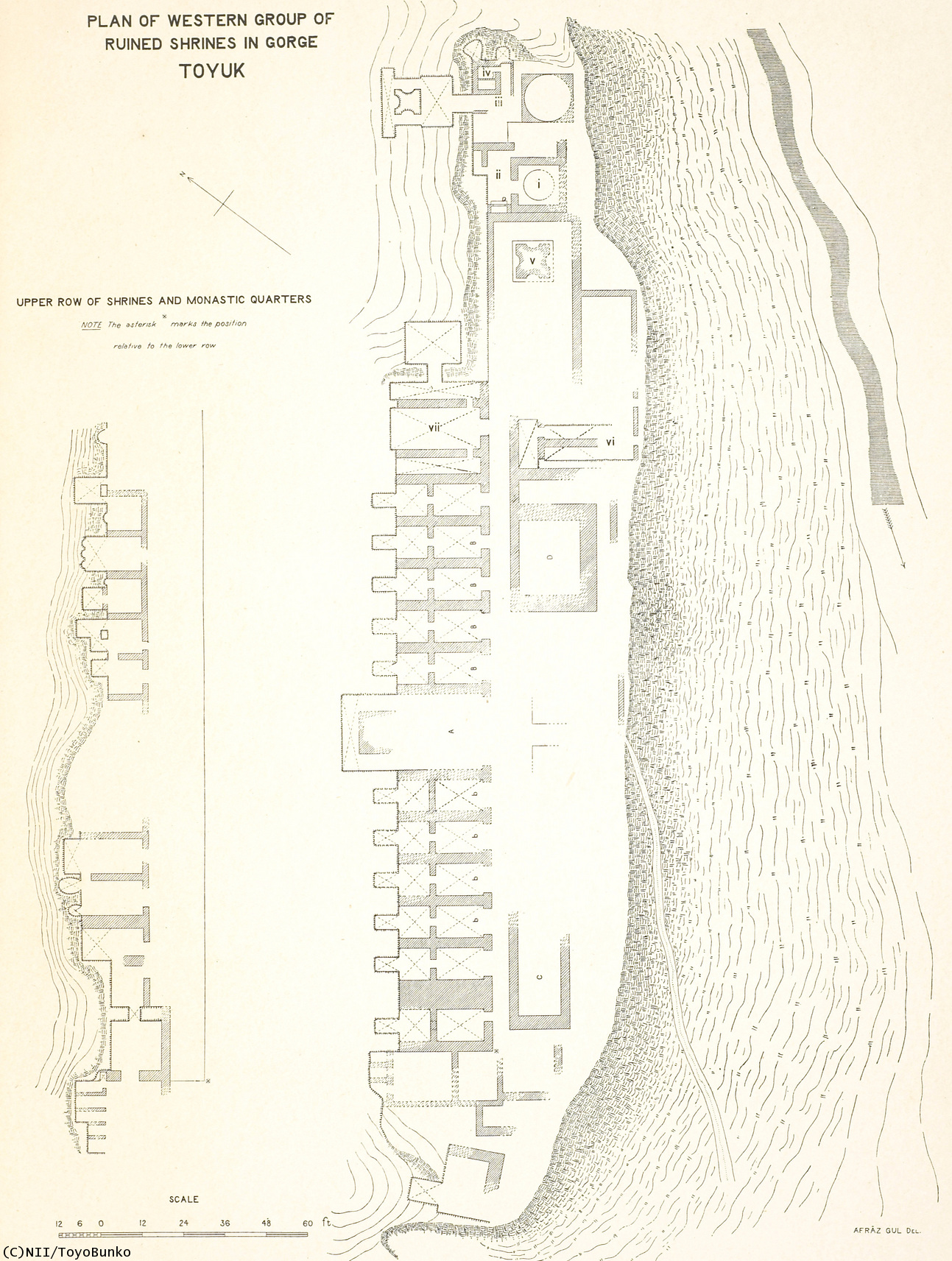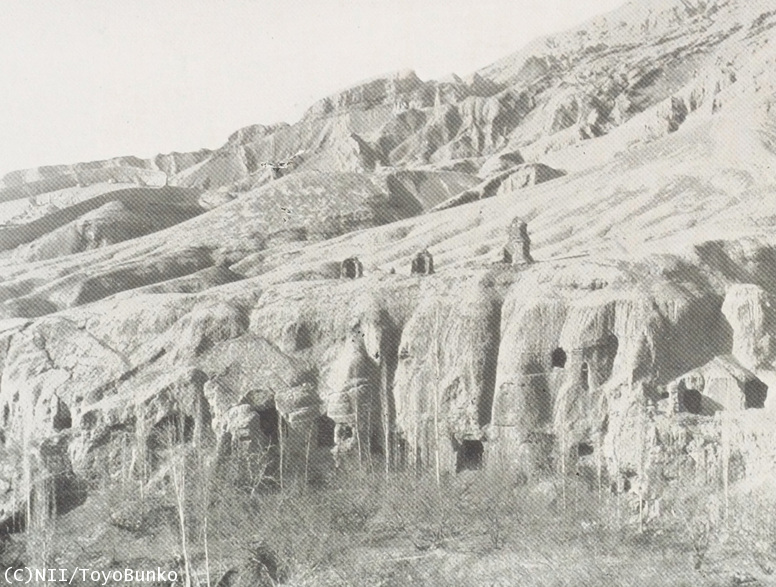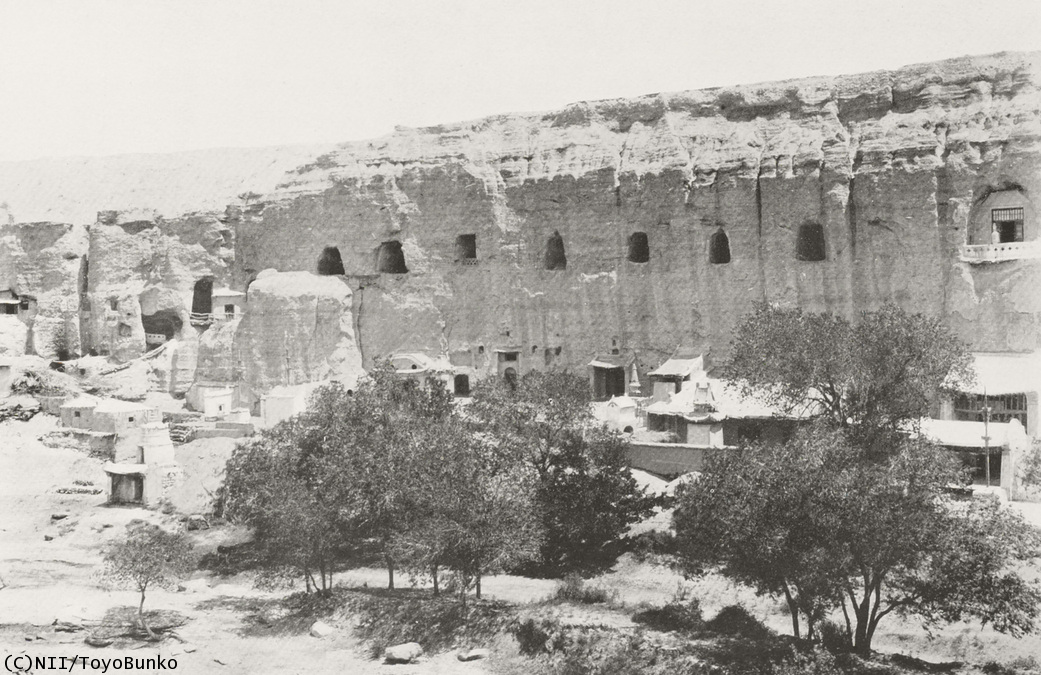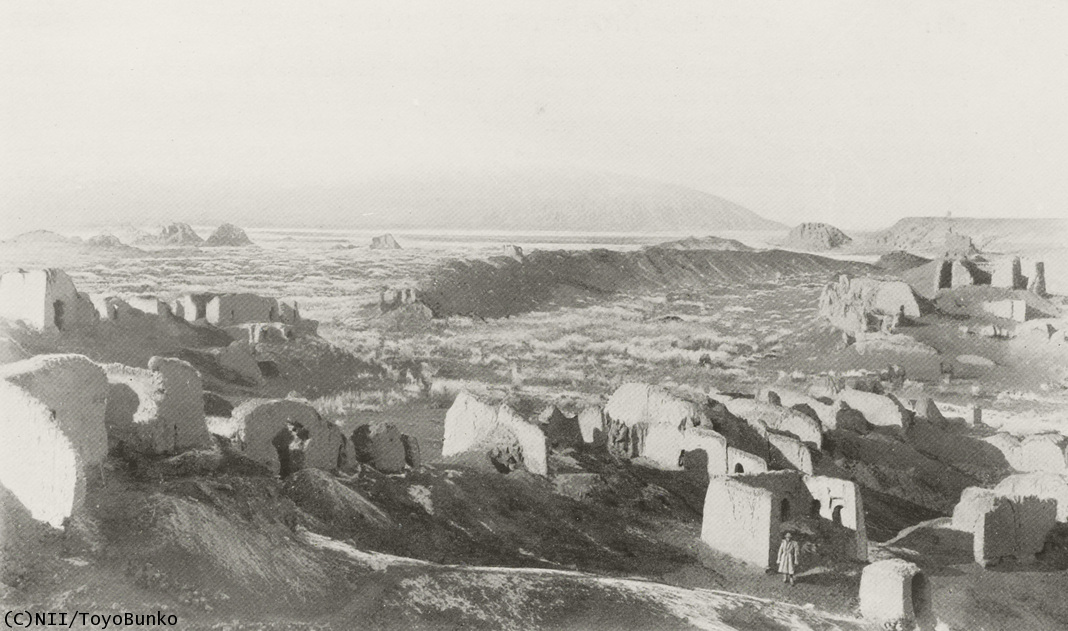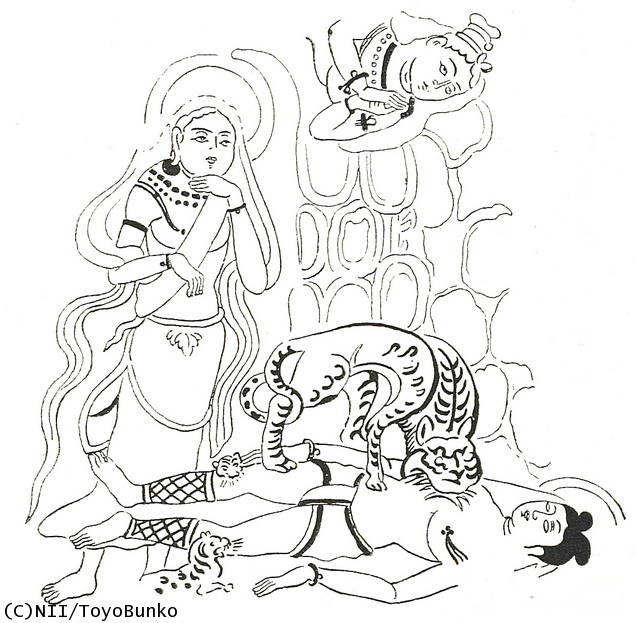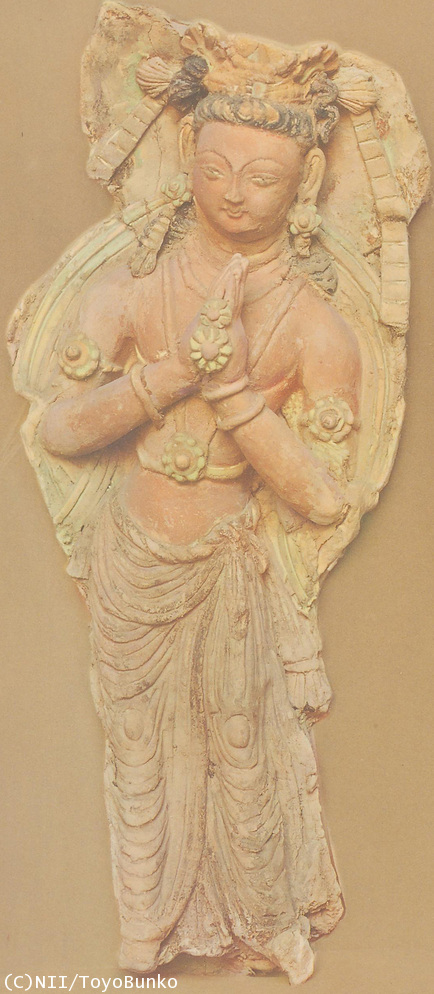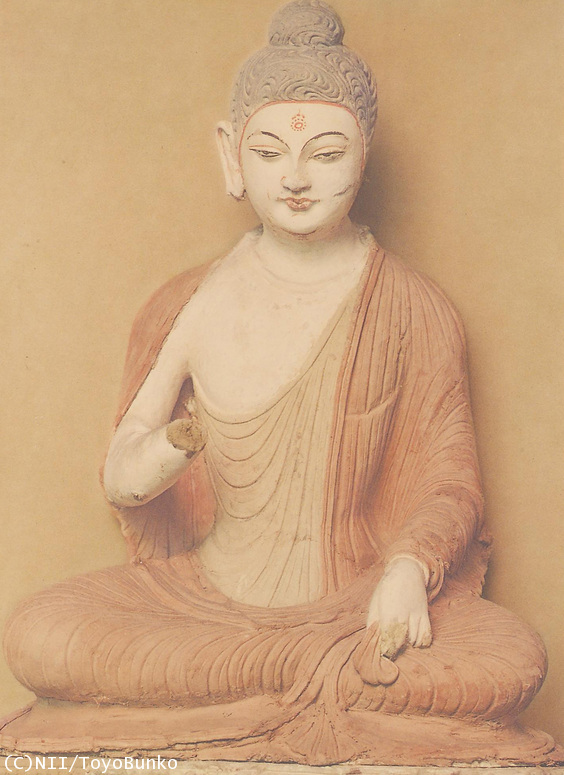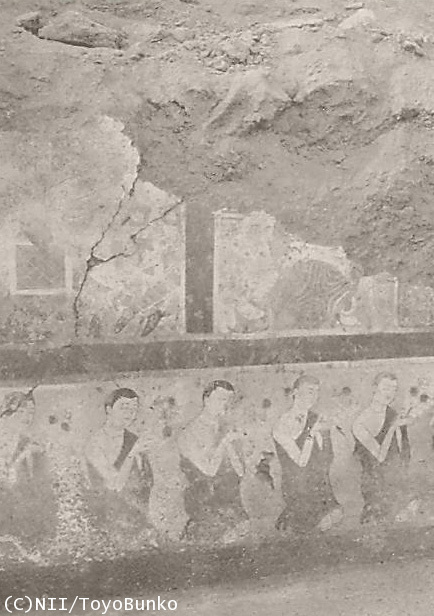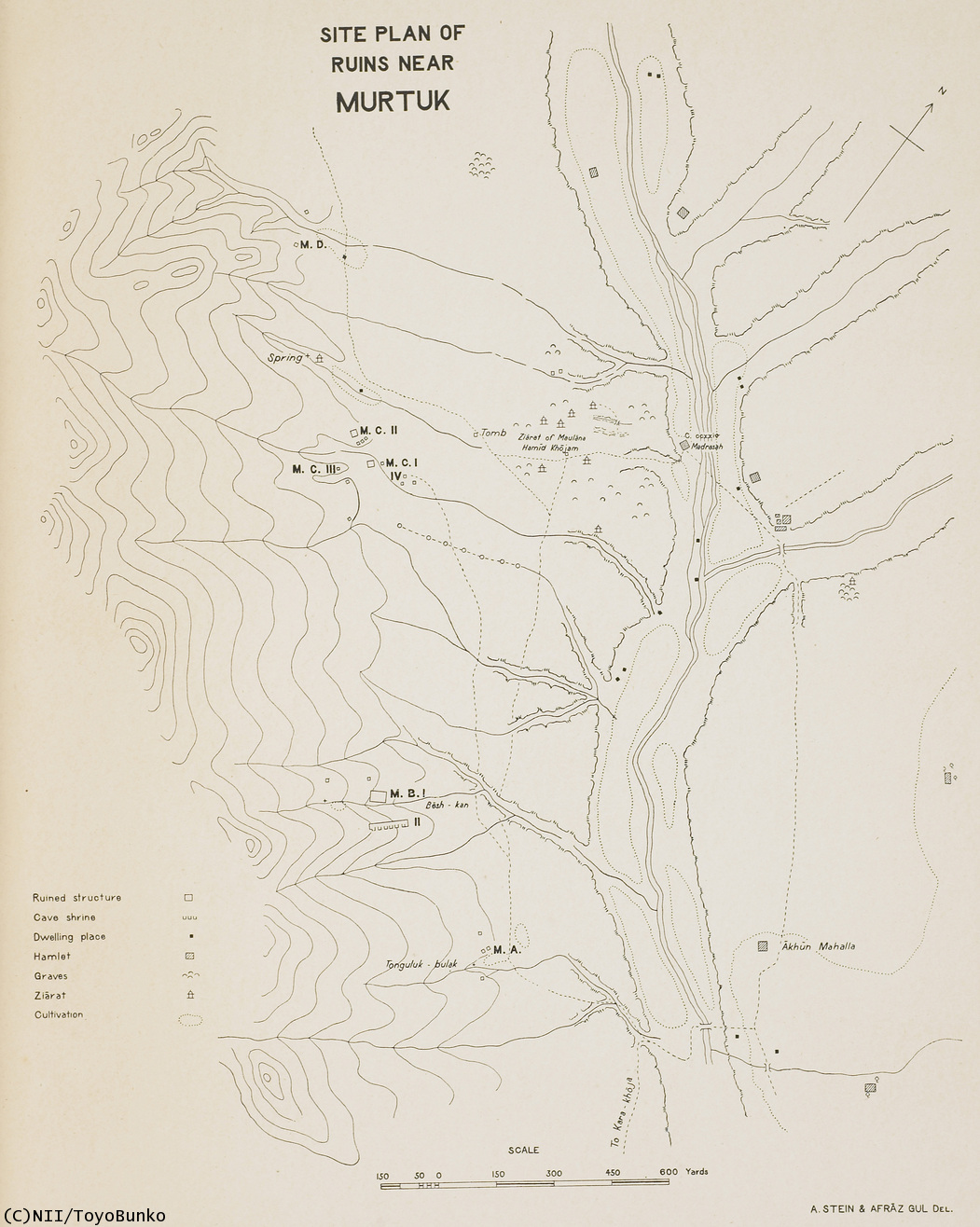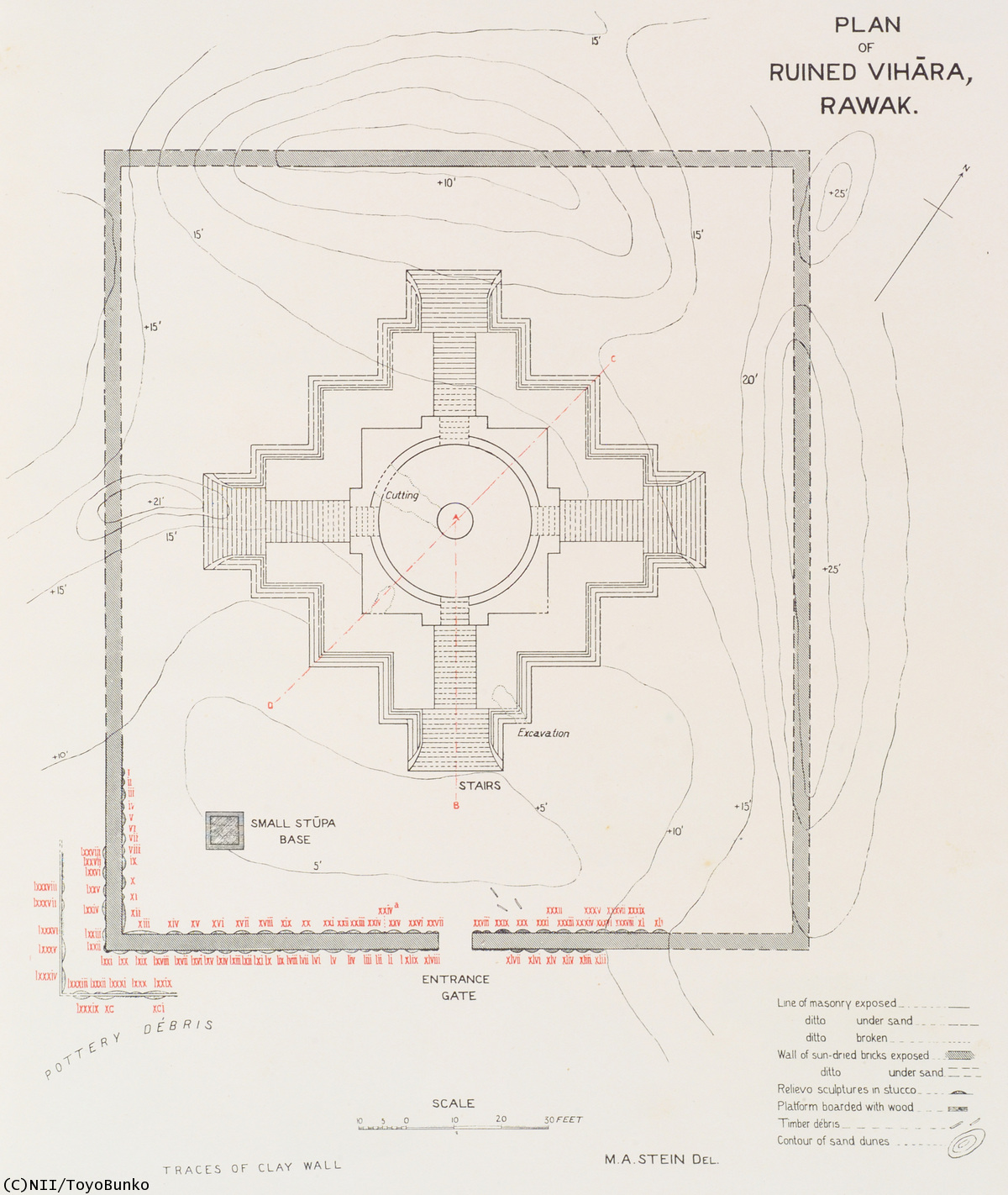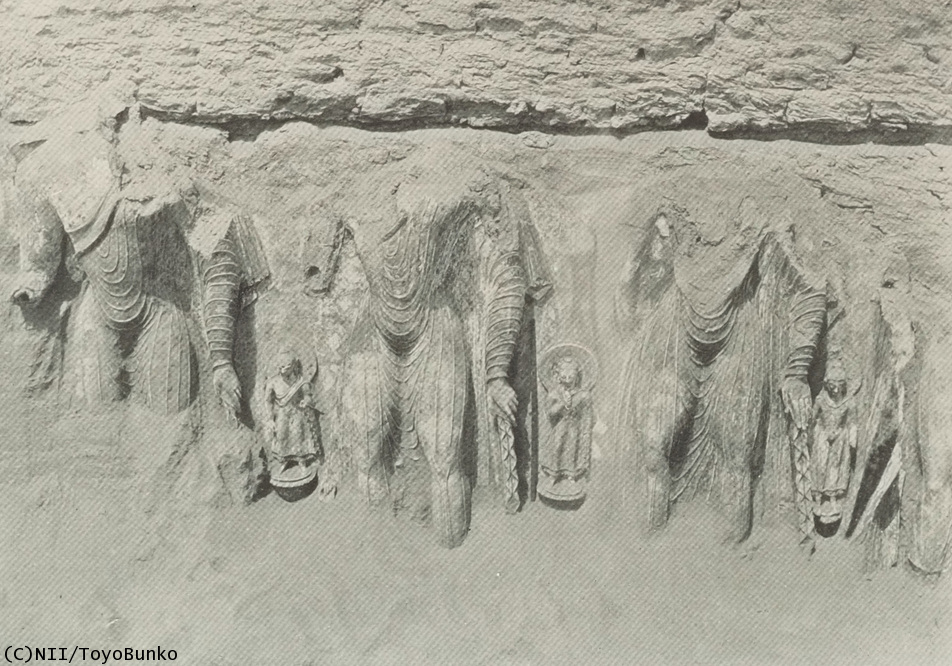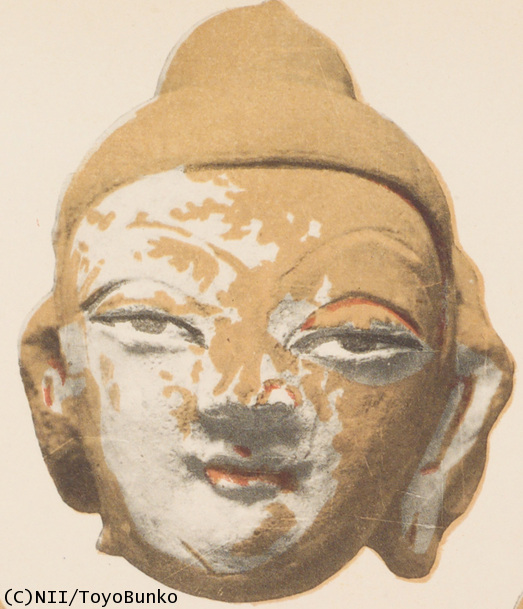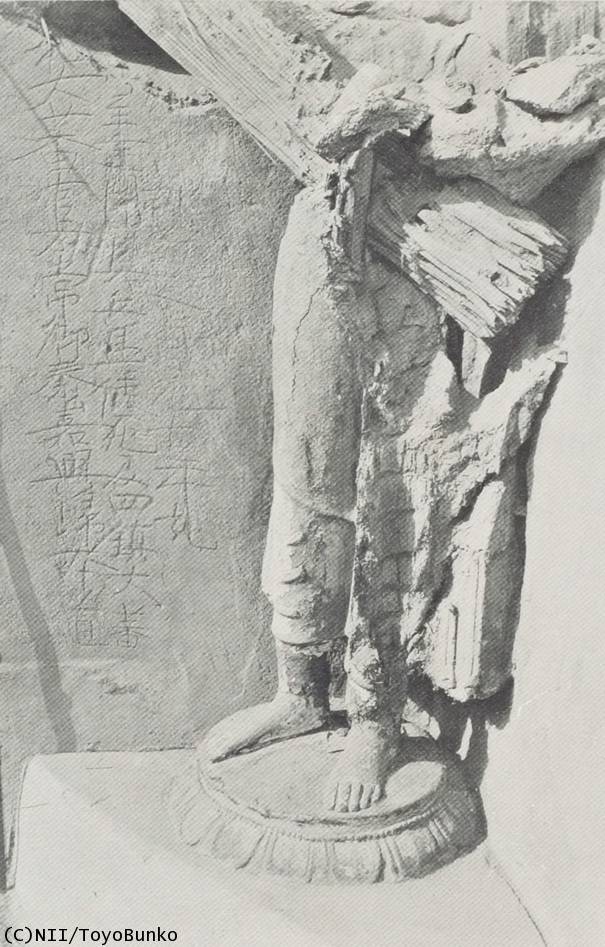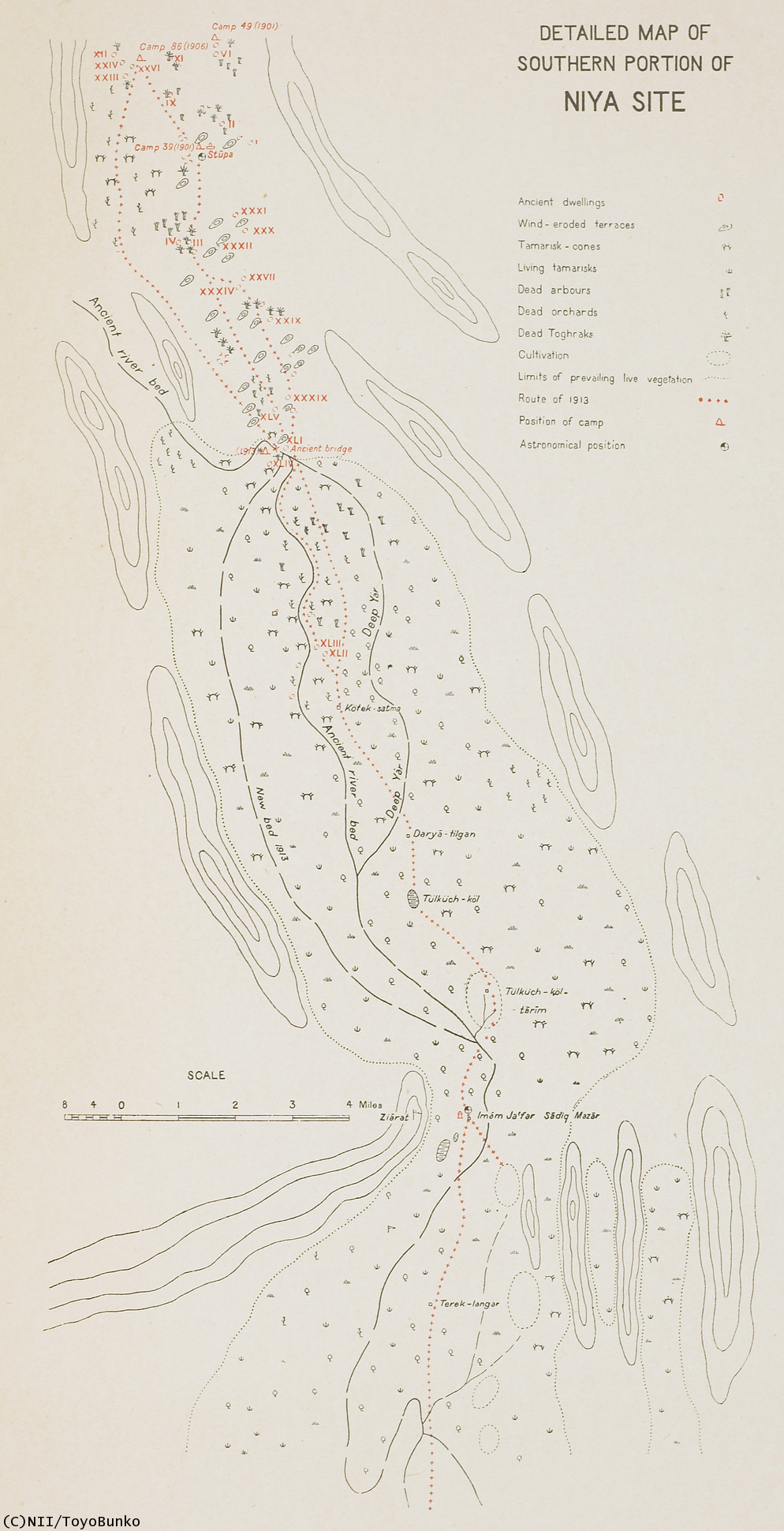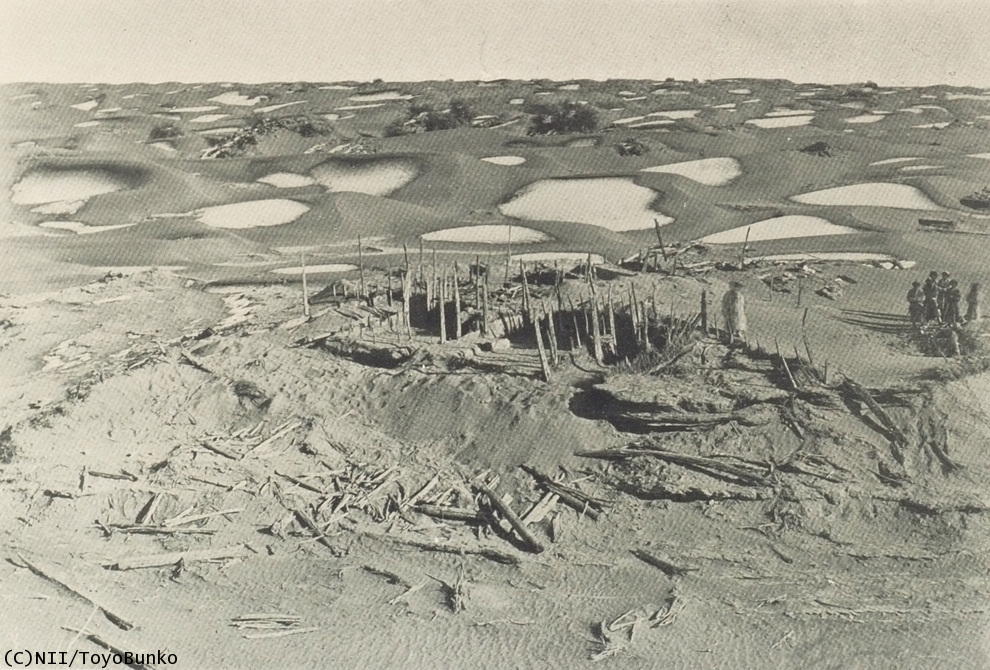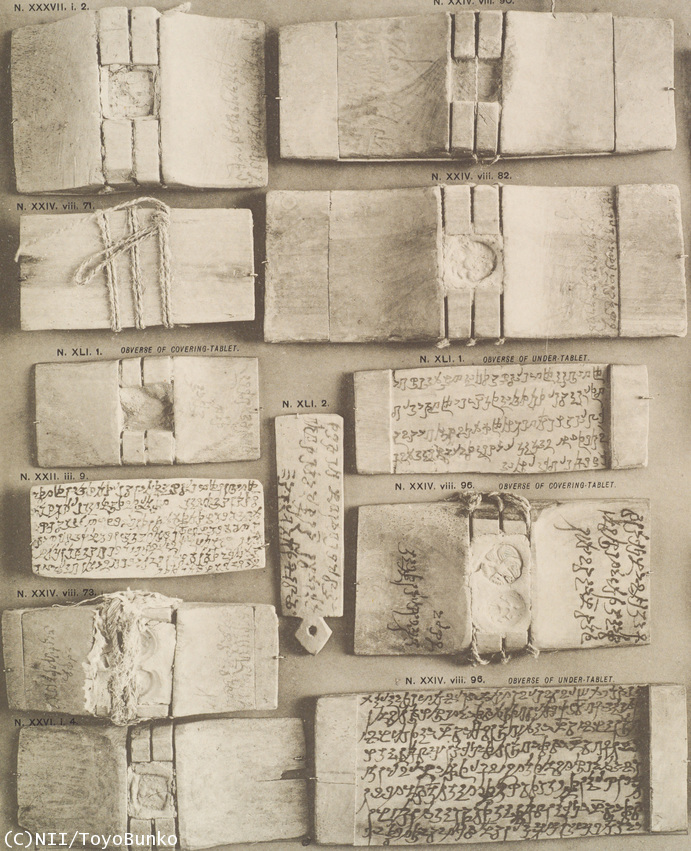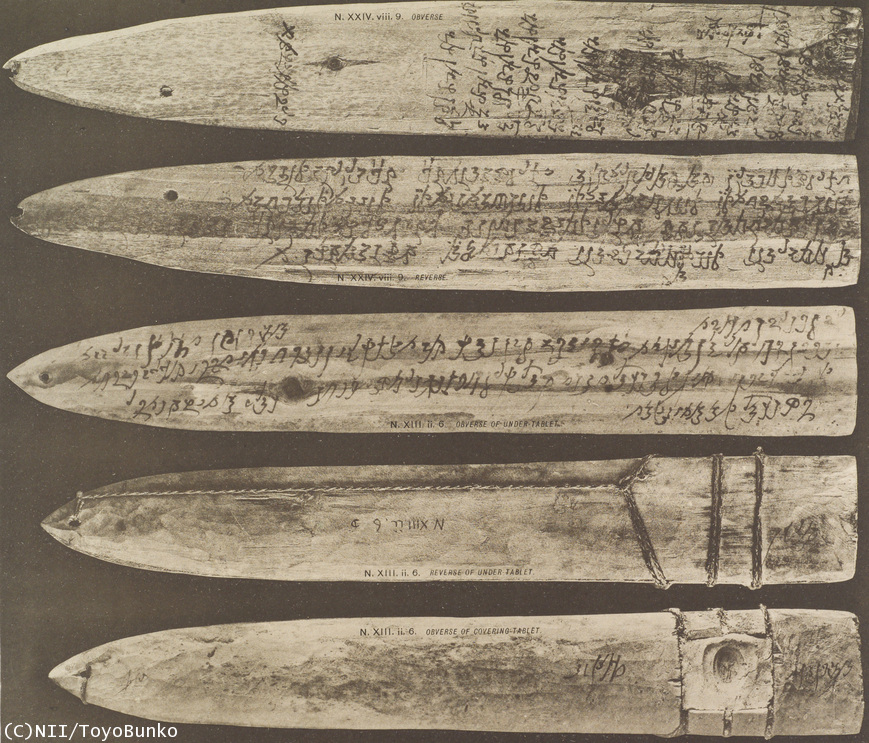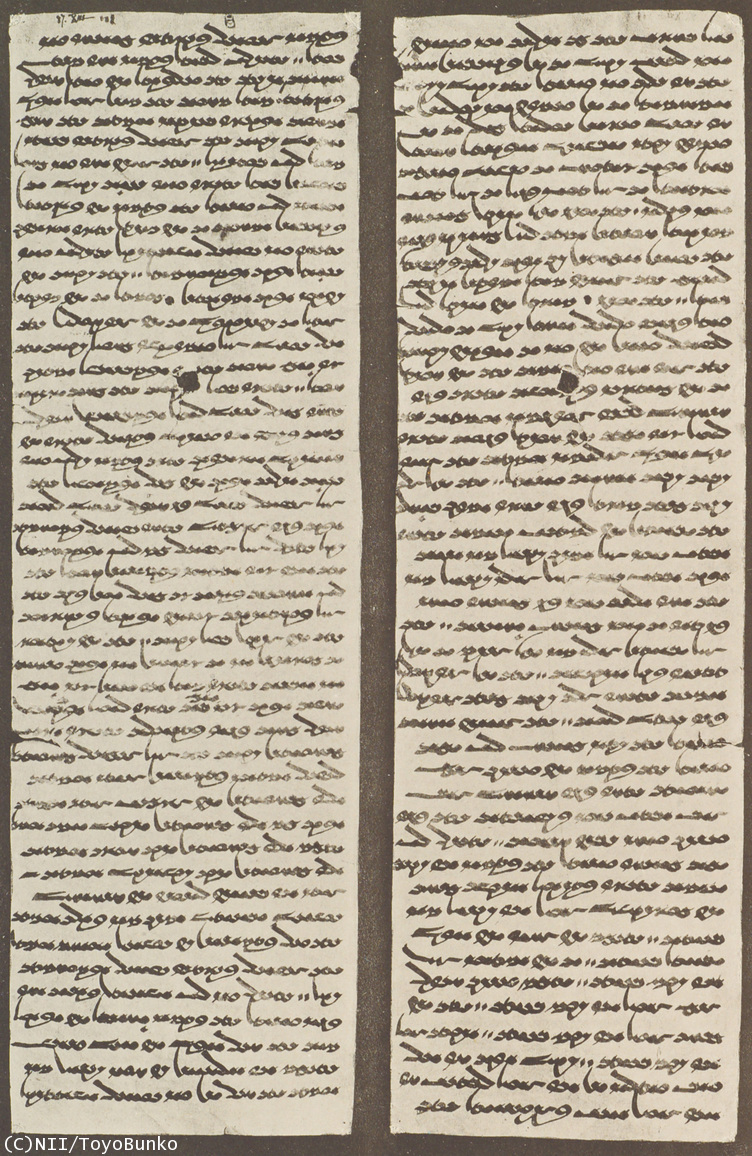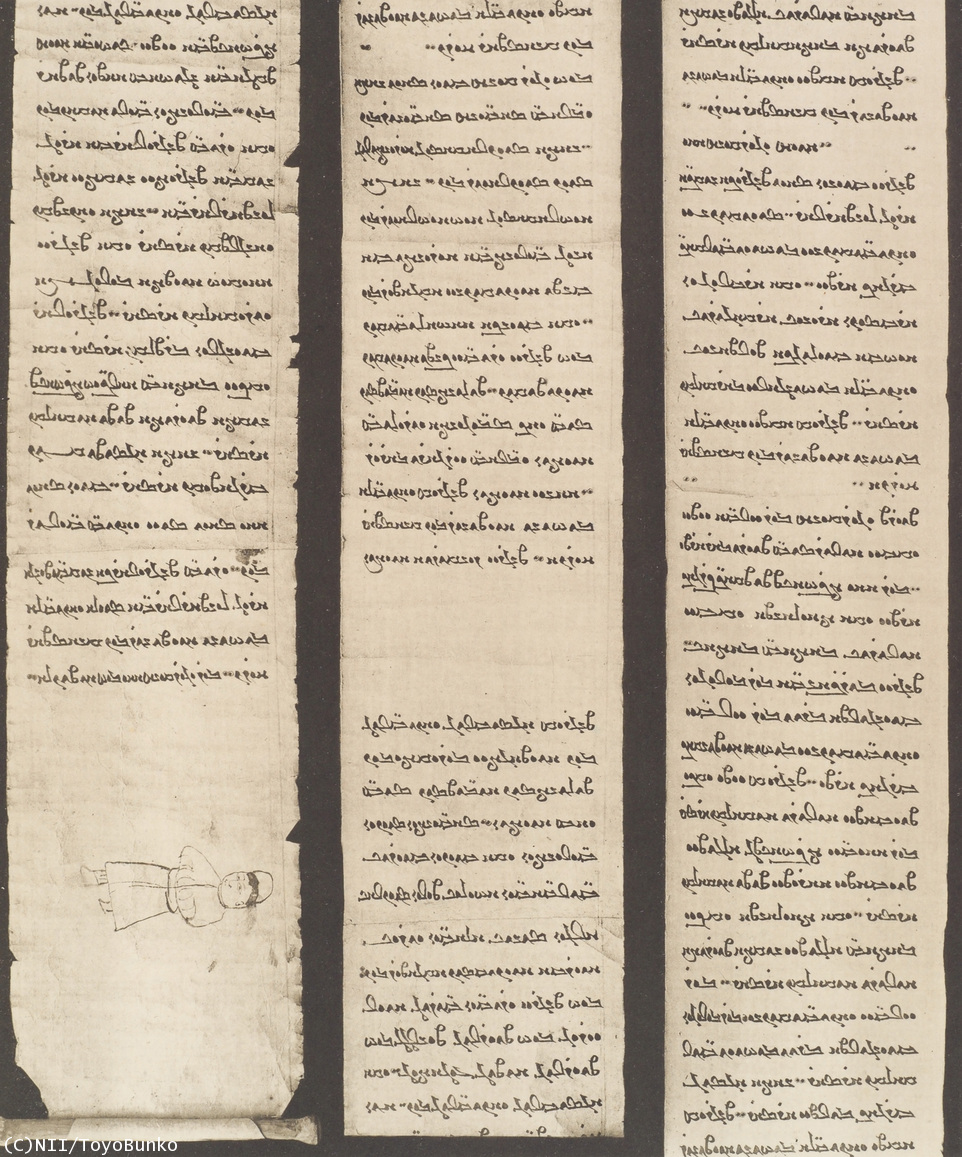DepthReading
An Overview of the Silk Road: Time, Space and Themes (Part 3 Themes)
Silk Road “Themes”
1. Ruins
 |  |
| (19) | (20) |
In addition to the flourishing of east-west trade, Central Asia was also a region through which Buddhism was transmitted eastward from India in to China. From the tenth century, Islam became the dominant religion in Central Asia, but until that time, it was Buddhist religion, philosophy and art which flourished there under the influence of India, Iran (former Persia), and China.
 |  |
| (21) | (22) |
[Buddhist Cave Temples] We find many Buddhist cave temples in the region which were carved out of cliffs by Buddhist artists and monks. These cave temples in the Kucha area include the Kizil Grottoes (04), the Kumtura Grottoes, the Kizilgaha Grottoes, the Sim-Sim Cave, and the Shikchin Thousand Buddha Caves (Floor Plan(19), Wall Paintings(20)).
 |  |
| (23) | (24) |
In the Turfan region, there are the Bezeklik Thousand Buddha Caves (01) and Toyuku Caves (Floor Plan(21), Distant View(22)).
 |  |  |  |
| (25) | (26) | (27) | (28) |
Along the Hexi Corridor, we find the Mogao Grottoes (05) in Dunhuang (which are the largest and the most famous), and the Yulin Grottoes in Anxi (Distant View(23), Interior of a Cave(24), which also displays the Present View) many wall paintings and stucco sculptures made between the Early Tang and Western Xia Period.
 |  |  |  |
| (29) | (30) | (31) | (32) |
[Buddhist Temple Remains] On the Northern Route, there are various temple ruins including, Shorchuk (Panoramic View(25),Wall Painting(26), Standing Image of Bodhisattva(27), Seated Buddha(28)), Tumshuq, Chotscho (Kara-Khōja) (01), and Yār-Khoto (Sketch Plan(30), Photo(31)), Murtuk.
 |  |  |  |
| (33) | (34) | (35) | (36) |
On the Southern Route, there are the ruins found at Yōtkan (03), Dandān-Uiliq (03), Rawak (Plan of Ruined Vihāra(33), Relief Sculptures of Buddhas(34)), Head of Buddha(35)), Endere Fort(36), Lou-lan (06), Mīran (07), and Khara-Khoto (08).
2. Ancient Documents
 |  |
| (37) | (38) |
[Ancient Languages] Central Asia is a treasure trove of documents in ancient languages. In Kucha on the Northern Route, experts have found documents in the Tokharian B (West Tocharian, or Kuchean) language. In Loulan (06), Niya (Detailed Map of Niya Site(37),Ruined House(38)), and Khōtan on the Southern Route, archaeologists have discovered Chinese documents which tell us about Chinese control over this area, along with documents in Indo-European languages like Kharoshthi (Documents on Rectangular Tablets(39), Documents on Double-Wedge Tablets(40)), Brāhmī and Khōtanese.
 |  |  |
| (39) | (40) | (41) |
The Dunhuang Manuscripts (09) discovered at the Library Cave (05) in the Mogao Grottoes in Dunhuang have been particularly historically significant. These documents include those written in Chinese, Khōtanese, Kuchean, Turkish, Uighur, Tibetan, Turkish Runic, Sogdian(41) and Gupta scripts. In Khara-Khoto, documents in the Western Xia language created originally by the Tanguts have been discovered (08).
 |  |
| (42) | (43) |
[Manichaeism] Manichaeism is a syncretic religion which originated in the Persia during the Sassanian Dynasty. As the Sassanian Empire flourished, the religion also saw its influence spread east. Introduced into the Tarīm Basin, many Manichaeism relics have been uncovered (Miniature with Uighur Scripture from Kara-Khōja(42), Manichaean Khuastuanift Text in Turkish from Dunhuang(43)).
3. Deserts
While the harsh climate caused bythe desert sands and the dry climate created tremendous challenges for to inhabitants or travelers in Central Asia (09), these same conditions made for a highly favorable environment for preserving historic objects such as ancient houses, temples, tombs, and documents. Dandān-Uiliq (03) in the Taklamakan Desert and Loulan (06) in the Lop Desert are some typical examples.
It is thought that Central Asia once had had huge inland seas full of water, but that these waters gradually dried up as time passed. It was climate change which caused the Tarim Basin’s largest lake, Lop Nor (06), to shift its location through fluctuations in the movement of the rivers flowing into it. Once known as the “Salty Lake” by ancient Chinese in the Han Dynasty, it later came to be known as the “Wandering Lake.” Not far from the lake, the ancient city of Khara-Khoto (08) was built during Western Xia Period and was continuously inhabited and even expanded up until the Yuan dynasty. The reason why the city was eventually abandoned is thought to be linked with the aridness that plagued the entire Central Asia.
Category: English
DepthReading
Key words:

